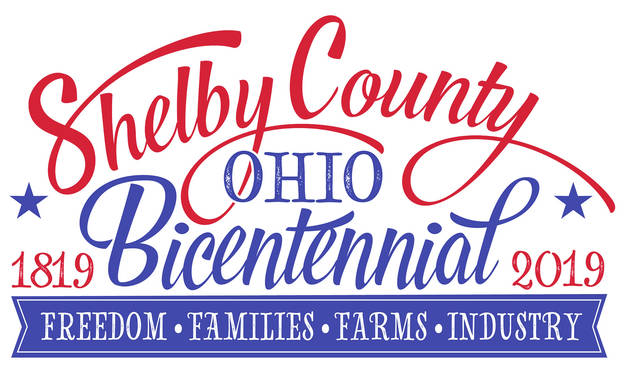
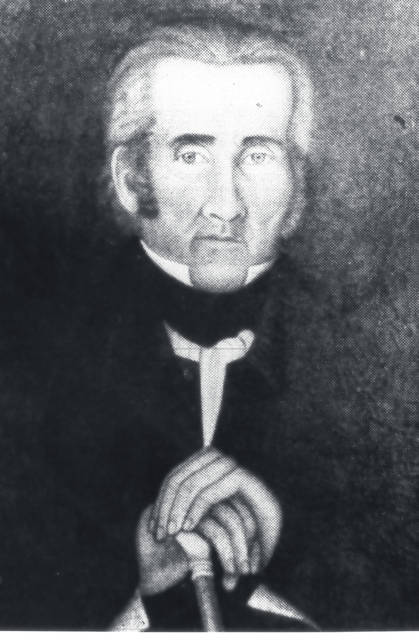
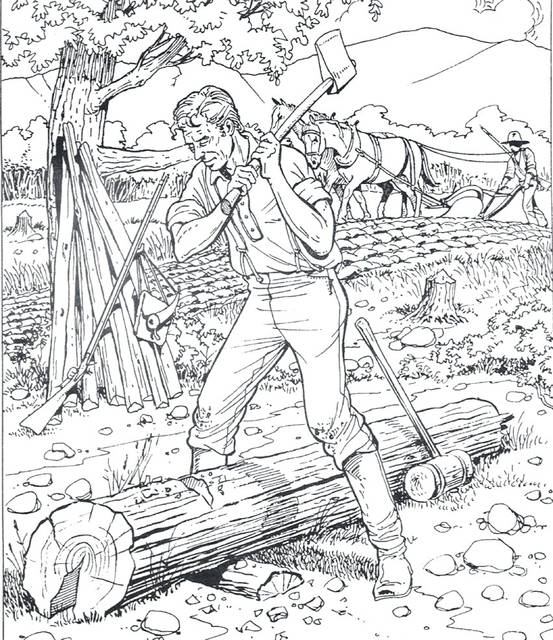
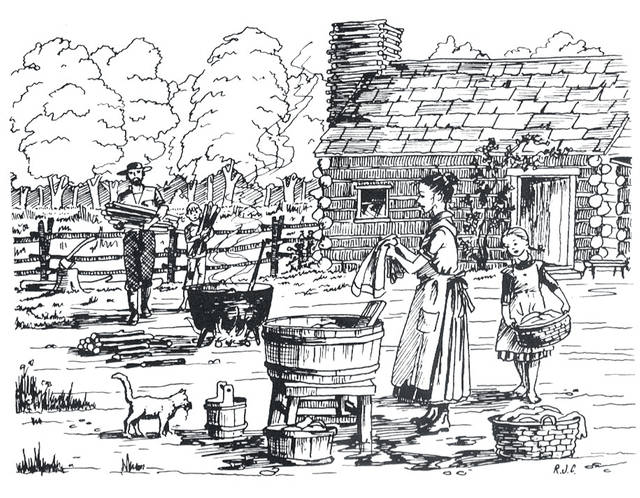
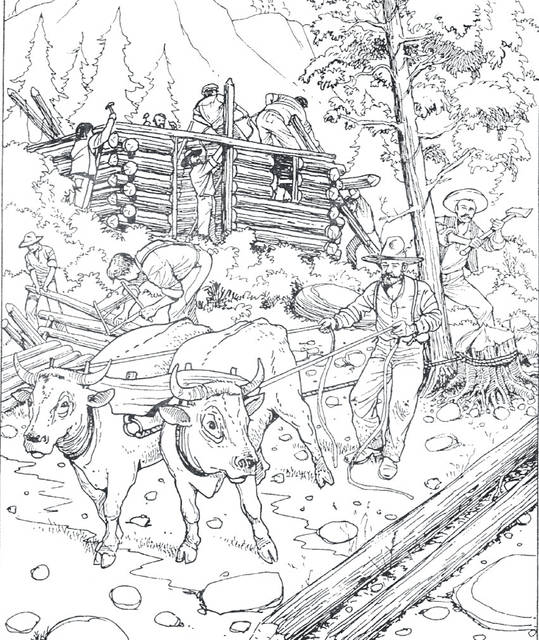
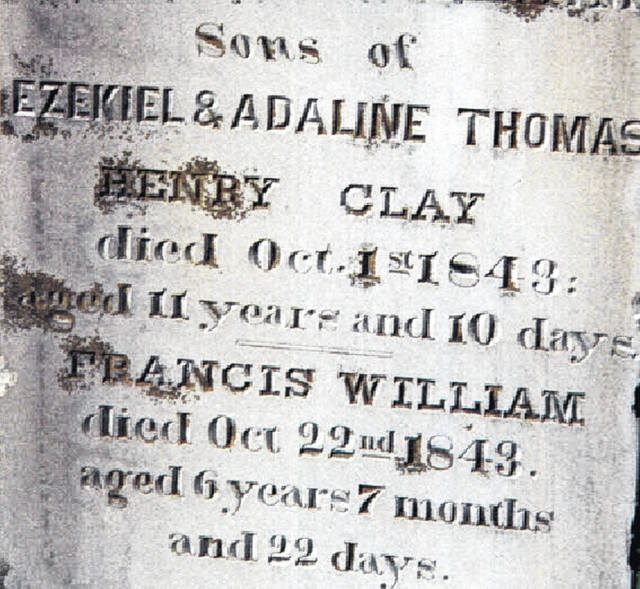
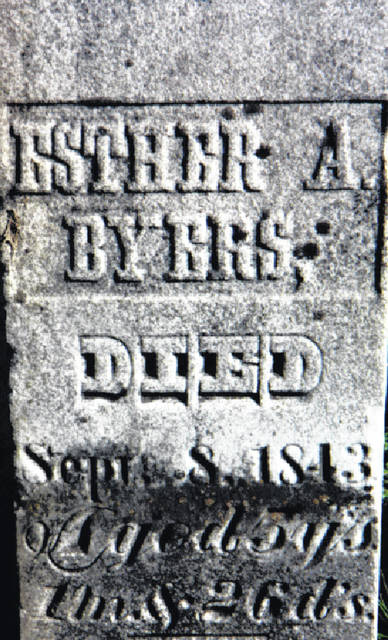
Editor’s note: in conjunction with the 200th celebration of the establishment of Shelby County, the Sidney Daily News will be publishing a year long series about the county’s history.
SIDNEY — Ohio was admitted to the Union in 1803 and Shelby County, with its fertile soil, vast unbroken forests, Great Miami River and plentiful game, was an inviting area for settlement. In the early years, pioneers came by foot, wagon, horse or boat. In 1805, the community’s first settler journeyed north from Kentucky, however, the region’s frequent land claim conflicts and the presence of Indians meant there were less than 50 families living in what is now known as Shelby County up until the War of 1812.
While pioneers were a special breed of people who could build, hunt, plant crops and gather food, not all early settlers were prepared to handle what greeted them when they arrived on the frontier. Families had to make do with what was available at the site where they chose to live and the task before them was certainly daunting: Remove the forests, kill the wild animals and transform this wilderness into a place that they could safely call home. The work was slow, tedious, constant and hard, with inadequate shelter and the ever present threat of Indian attack. The life expectancy of pioneer men and women ranged between 30 and 40 years of age.
The basic tools required by every pioneer were a gun, ammunition, powder, fish hooks, traps, an ax, a spade and a hoe. With these tools, he could build, hunt, plant crops and gather food. Just as someone is taught the proper handling of firearms today, a child soon learned how to handle an axe and keep it ready for use. An invaluable tool, a man could walk into the forest with nothing but his axe, fashion snares to catch game, fell trees and fit them into a cabin. He could clear brush for a garden and use the sharp blade and whittle with it.
As soon as a pioneer would arrive at a “permanent” stopping point, they would start preparing the land for crops. Timber was so heavy that long years of labor would be required to cultivate the land with large numbers of birds devouring seed almost as fast as the settler could plant it. The animals and birds native to an area could ravage a farmer’s fields, so laws were passed encouraging the killing of these pests by paying bounty on them. In 1891, a bounty of $.10 was paid for each groundhog killed and $.20 a dozen for English sparrows by Perry Township officials. From 1819 to 1854, a $4 bounty was paid for each of the almost 800 wolves killed in Shelby County. Squirrels were numerous and often large hunting parties were formed to hunt them.
Families had to be almost totally self-sufficient, with farmers producing enough for themselves, but little more. Pioneers were often reduced to meager fare, especially as they waited for those first crops to arrive. They soon learned the art of preparing foods which were life-sustaining and could be easily transported. Their supplies usually consisted of flour, dried meats and fruits, potatoes, beans, corn and a small reserve of sugar and salt (at the time so expensive, it was considered a luxury).
Early eating dishes were larger and made of wood, partly for their durability and also affordability. Probably the most important cooking utensil used by the pioneers was the skillet. A hunter would shoot wild game such as deer, wild ducks, geese or jackrabbits and along the way, wild berries and other edible fruits were added to the food supply. Settlers would also fish in nearby streams to vary the content of their meals.
According to R. Sutton, “(Shelby County) …pioneers…endured hardships and privations of which we of today have but little conception…food was always coarse and unpalatable to the modern taste, and often scant — not sufficient for the demands of nature.” The tomato, now consumed by all, in those days was laid upon the fireplace mantel for an ornament, because Ohio women believed it was poisonous. Women planted gardens, dried vegetables/fruits and raised poultry. Canned food was just being invented, so the best way to store food was to dry it. Sugar was made from beets, corn stalks and watermelon. Apples were a popular crop for farmers in the 1800s as they could be eaten in many ways for meals, served as a drink and fed to animals.
Pioneers soon learned the art of preparing foods which were life-sustaining and living off whatever they were able to find. Access to water was very important in pioneer days. There were no pipes bringing water into the house and wells were expensive and hard to dig. There were no refrigerators and many foods would spoil quickly in the heat, so women put foods into pottery containers and placed them in cool water. ‘Necessity is the mother of invention’ was certainly the slogan of the pioneer. Most settlers designed and built their own household furniture including the construction of beds followed by a dining room table along with wooden dishes and utensils. It was common to light homes with candles made from beeswax or tallow. Tins and gourds were used for drinking.
Prior to the Civil War, Ohio had no laws governing pharmacy and few effective medicines were available. The practice of medicine required neither a medical degree nor a license. Many doctors simply prescribed the use of herbs, medicines, poultices, hot baths and dietary moderation. The relationship between cleanliness, germs and infection, had not yet been determined so diseases such as pneumonia, smallpox, typhoid and cholera were quite common. Others included the croup, gout, consumption, diphtheria, whooping cough, pleurisy, dropsy, scurvy, chillalins, and, of course, broken bones and wounds. Chemical substances such as mercury, lead, various poisonous plant extracts, arsenic, opium, etc., were commonly prescribed. Without regular access to a doctor, a pioneer woman became the physician of her own home. If she proved successful, word would spread throughout the region and the woman would be asked to assist other pioneers as well.
The earliest school buildings were usually a crude log cabin built by the whole community with a fireplace in one corner and a window in the other to provide proper air circulation. Prior to the 1816 establishment of the county’s first school in Hardin, students were taught the three ‘R’s – reading, ‘riting and ‘rithmetic by teachers living with the family. School was regarded as a luxury as pioneer families were more concerned with survival and had very little free time to devote to ‘book learning’. Early school text books were the New Testament, the U.S. Spelling Book and Dayboll’s Arithmetic. An eighth grade education was considered sufficient for most occupations.
Without telephones, newspapers or mail service, pioneers relied upon each other to find out what was happening in the rest of the world, and they welcomed visits from other travelers bringing fresh news about other places. The first postal route in what is now Ohio was established in 1794. The mail would take 7 to 13 days to travel from Pittsburgh to Cincinnati via boat, then contractors delivered the mail to each community. Traveling preachers, doctors and civil officials moved from place to place to provide necessary services.
Pioneers worked hard from dawn until dusk so there wasn’t a lot of free time to just relax. They had to rely on themselves for the fun they had. Friends and neighbors would stop work occasionally to gather in a nearby pasture or barn to play music and dance. Families entertained themselves by telling stories, playing cards, board games (checkers or chess), and reading the Bible. Recreational and sports activities such as skating, swimming and fishing were also extremely popular.
Early Shelby Countians, conscious of their pioneering days, formed a Pioneer Association in 1886. They met once a year and dues were .25 each. The only requirement for membership was being a resident of early Shelby County. The group built a log cabin among the trees not far from the south gate of the local fairgrounds as a legacy of their wilderness life. They met annually for several years to share stories about their founding years.








